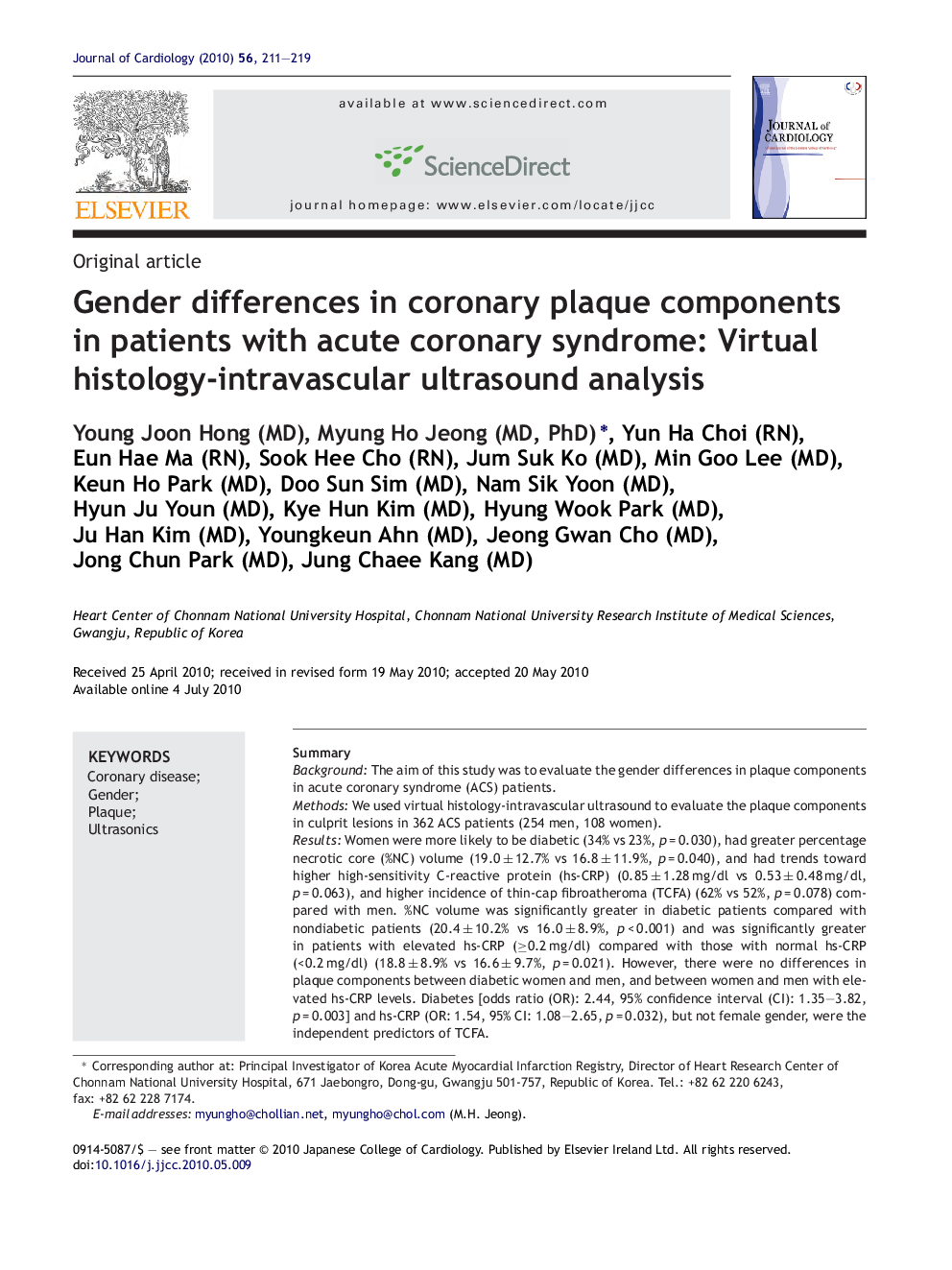| Article ID | Journal | Published Year | Pages | File Type |
|---|---|---|---|---|
| 2963437 | Journal of Cardiology | 2010 | 9 Pages |
SummaryBackgroundThe aim of this study was to evaluate the gender differences in plaque components in acute coronary syndrome (ACS) patients.MethodsWe used virtual histology-intravascular ultrasound to evaluate the plaque components in culprit lesions in 362 ACS patients (254 men, 108 women).ResultsWomen were more likely to be diabetic (34% vs 23%, p = 0.030), had greater percentage necrotic core (%NC) volume (19.0 ± 12.7% vs 16.8 ± 11.9%, p = 0.040), and had trends toward higher high-sensitivity C-reactive protein (hs-CRP) (0.85 ± 1.28 mg/dl vs 0.53 ± 0.48 mg/dl, p = 0.063), and higher incidence of thin-cap fibroatheroma (TCFA) (62% vs 52%, p = 0.078) compared with men. %NC volume was significantly greater in diabetic patients compared with nondiabetic patients (20.4 ± 10.2% vs 16.0 ± 8.9%, p < 0.001) and was significantly greater in patients with elevated hs-CRP (≥0.2 mg/dl) compared with those with normal hs-CRP (<0.2 mg/dl) (18.8 ± 8.9% vs 16.6 ± 9.7%, p = 0.021). However, there were no differences in plaque components between diabetic women and men, and between women and men with elevated hs-CRP levels. Diabetes [odds ratio (OR): 2.44, 95% confidence interval (CI): 1.35–3.82, p = 0.003] and hs-CRP (OR: 1.54, 95% CI: 1.08–2.65, p = 0.032), but not female gender, were the independent predictors of TCFA.ConclusionsAlthough it seems likely that female ACS patients have more vulnerable plaque components compared with male ACS patients, these findings may result not from true gender differences in plaque components but higher prevalence of diabetes and hs-CRP elevation in women.
